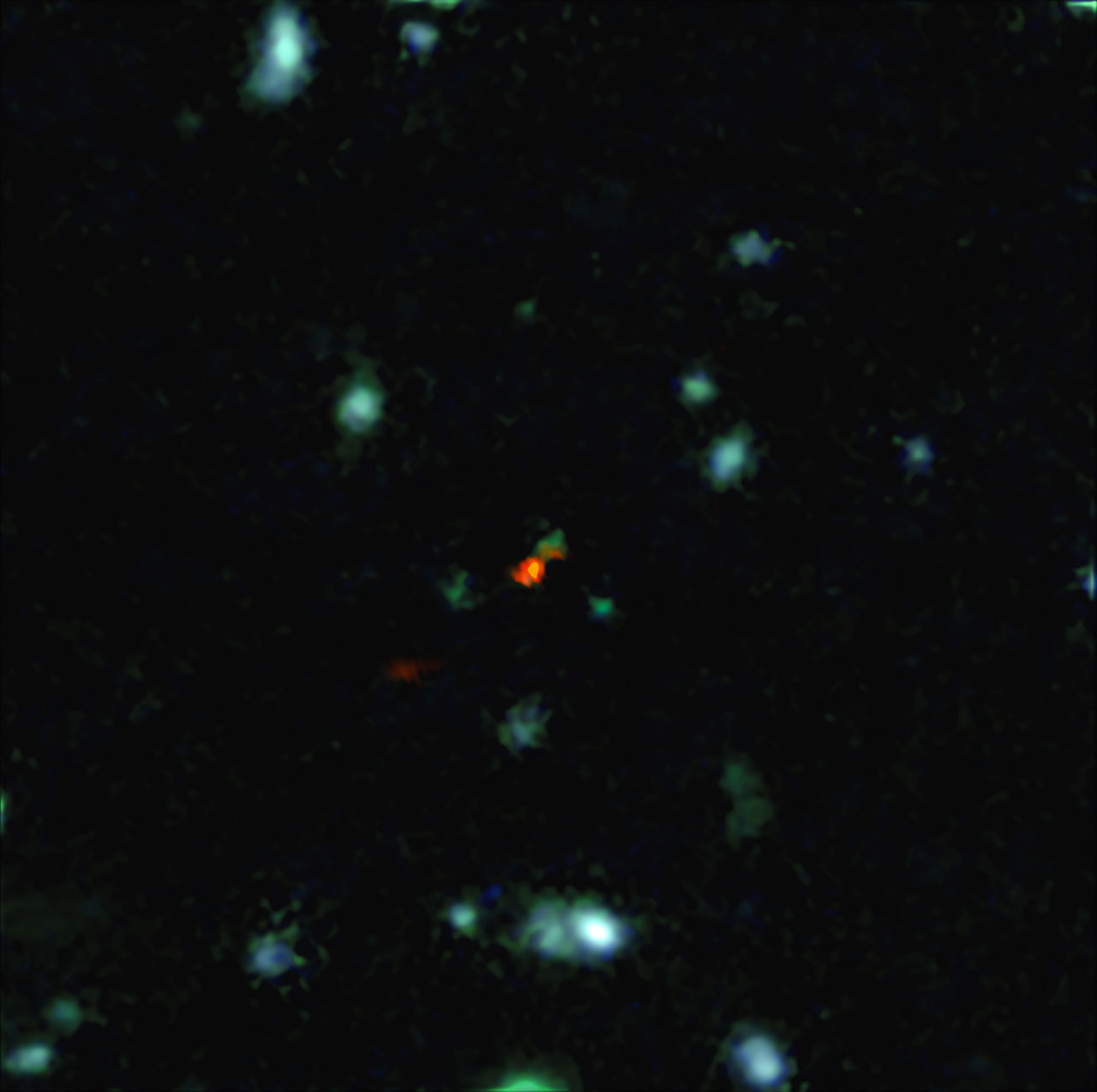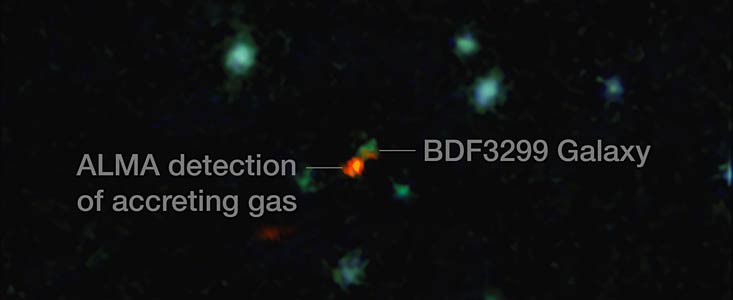This Lopsided Ancient Galaxy Is the 1st View of Early Galactic Assembly

The mysterious smudges central to this new image are an ancient galaxy in the throes of formation — and for the first time scientists can glimpse its off-kilter structure.
In the new image, researchers were able to make out the glow of ionized carbon (shown in red) in the process of assembling into a galaxy — called BDF 3299 — around 800 million years after the Big Bang. The carbon cloud is overlaid on another picture of the galaxy's neighborhood, where you can tell the galaxy itself is off to the right. Researchers think that carbon's glow is obscured by the supernova blasts and chaos of galactic formation there, but the cold store of carbon nearby still shines as the galaxy draws from it.
The image was captured by the Atacama Large Millimeter/submillimeter Array (ALMA), a giant radio telescope in Chile consisting of 66 radio antennas, most 40 feet (12 meters) in diameter. [Amazing Photos from Giant ALMA Radio Telescope]
"This is the most distant detection ever of this kind of emission from a 'normal' galaxy, seen less than one billion years after the Big Bang," Andrea Ferrara, a cosmologist and co-author of the study from Scuola Normale Superiore, a part of the Pisa University System in Italy, said in a statement. "It gives us the opportunity to watch the build-up of the first galaxies. For the first time we are seeing early galaxies not merely as tiny blobs, but as objects with internal structure!"

BDF 3299 was among the first galaxies to condense out of cold matter during the galaxy's reionization phase. Seeing the crooked galaxy's formation offers a chance to refine models of the very early universe.
"We have been trying to understand the interstellar medium and the formation of the reionisation sources for many years," Ferrara said. "Finally, to be able to test predictions and hypotheses on real data from ALMA is an exciting moment and opens up a new set of questions. This type of observation will clarify many of the thorny problems we have with the formation of the first stars and galaxies in the Universe."
The results are detailed July 22 edition of the Monthly Notices of the Royal Astronomical Society.
Get the Space.com Newsletter
Breaking space news, the latest updates on rocket launches, skywatching events and more!
Email Sarah Lewin at slewin@space.com or follow her @SarahExplains. Follow us @Spacedotcom, Facebook and Google+. Original article on Space.com
Join our Space Forums to keep talking space on the latest missions, night sky and more! And if you have a news tip, correction or comment, let us know at: community@space.com.

Sarah Lewin started writing for Space.com in June of 2015 as a Staff Writer and became Associate Editor in 2019 . Her work has been featured by Scientific American, IEEE Spectrum, Quanta Magazine, Wired, The Scientist, Science Friday and WGBH's Inside NOVA. Sarah has an MA from NYU's Science, Health and Environmental Reporting Program and an AB in mathematics from Brown University. When not writing, reading or thinking about space, Sarah enjoys musical theatre and mathematical papercraft. She is currently Assistant News Editor at Scientific American. You can follow her on Twitter @SarahExplains.









